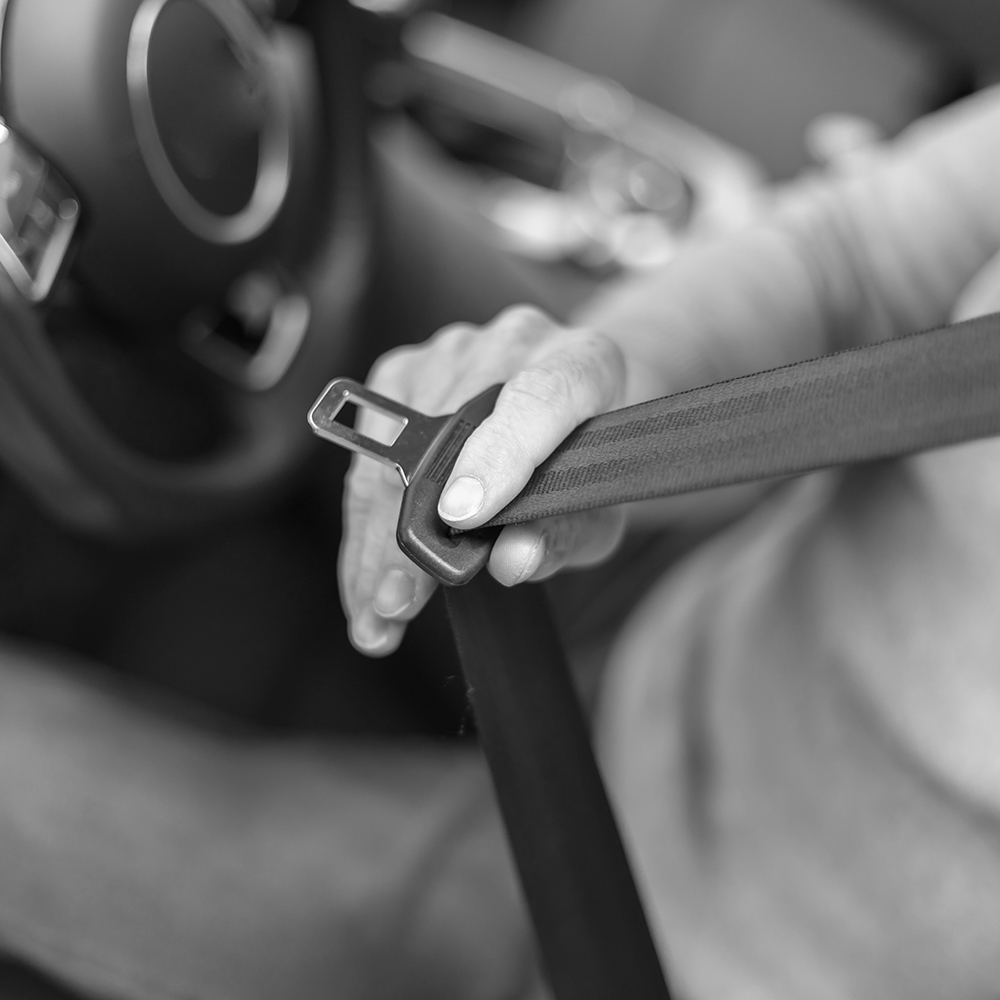With circa 1.4 billion cars in the world, it’s not surprising that there have been countless advancements in car technology. However, whilst new features such as automatic parking and integrated air freshener systems (honestly…) are alleged to improve the driving experience, it’s the advances in safety that have made the real difference. In this latest this+ article we celebrate the 10 advancements in car safety that have truly delivered lasting positive impact (no pun intended!)
Clunk Click Every Trip
1. The Wiper Blade (1903)
It may seem hard to image a world without windscreen wipers – but there was one (before 1903). Mary Anderson – from Alabama – was in New York and frustrated by her slow street car progress – as a consequence of snow and the driver having to stop to wipe the windshield clean. A sketch, a letter to the patent office and bingo – patent number 743801 became the forefather of what we know today as the wiper blade.
2. Laminated Glass (1927)
Can you imagine a car windscreen made from the same glass that you’d use in a greenhouse? Before 1927, cars had “normal” glass windscreens – but in 1927, Henry Ford, after witnessing a crash test that inflicted considerable lacerations to the unfortunate test driver, fitted safety glass as standard in the Model T. And no, it wasn’t black...
3. The Crash Test Dummy (1949)
The earliest iteration of what we know as the crash test dummy appeared in 1949 when J.P. Stapp, a surgeon, developed “Sierra Sam” – the world's first crash test dummy. Based on the cast of a real human, Sam was a rubber and steel, instrument laden victim subjected to the most terrible abuse. But his heroism – and that of many of his subsequent colleagues – have made the car a much safer place for us mere mortals...
4. The Airbag (1951)
Despite being invented in 1951, it took until 1980 for the W126 Mercedes-Benz S-class to be the first to be sold in Europe with airbags as an option. Thankfully the uptake was much more rapid once the benefits were fully appreciated and now the airbag is as ubiquitous as the windscreen wiper or steering wheel. Analysis by the NHTSA in the USA determined that in a 20 year period from 1987 – 2017, airbags saved 50,547 lives. Incredible stuff.
5. The Disc Brake (1953)
Whilst variants of the disc brake existed prior to 1953, it was Jaguar, in conjunction with Dunlop, who developed disc brakes for use in road cars. Tested at Le Mans in 1953 and appearing in road cars from 1955, the safety and performance benefits of this much under-rated device have contributed to the avoidance of thousands of accidents.
6. The Seatbelt (1959)
It’s a simple proclamation, but a true one – that “very few people have saved more lives that Nils Bohlin”. The 3-point seatbelt, invented by Nils Bohlin, has conservatively saved many hundreds of thousands of lives and avoided tens of millions of major and life changing injuries. Patented in 1959 by Volvo, it was clear that this would provide a massive source of licensing revenue and marketing exclusivity. However, understanding the benefits to wider society, the designs were gifted to their competitors to encourage mass adoption and to save lives.
7. The Anti-Lock Braking System (1966)
Whilst ironically common on aircraft, ABS as we know it only appeared in automotive circles in 1966. British based manufacturer Jensen used a version of Dunlop’s Maxaret system in the CV8 and the trend continued. Whilst Jensen pioneered the use of ABS, Mercedes-Benz, which introduced a much more effective electronic version in 1978, is arguably the driving force behind the adoption and success of this life saving technology.
8. European New Car Assessment Programme (NCAP – 1997)
The Euro NCAP system was implemented in 1997 to help consumers choose the safest vehicles which met their specific needs. By reviewing safety features and performing a significant number of crash scenario tests, the NCAP system awards a performance rating that has now become an invaluable tool when determining what car to buy. Or avoid!
9. Collision Mitigation Braking (2003)
In 2003 Honda proudly announced the world’s first “Collision Mitigation Braking System”. Whilst commonplace nowadays, the system used radar and relative speeds to provide audible and visual warnings to prompt the driver to take action. If insufficient, the car will automatically apply the brakes to reduce the risk of rear impact. Invaluable stuff – especially for those folks who still – despite the law – choose to read their phones in slow moving traffic.
10. Blind Spot Information System (2004)
Volvo’s ward winning BLIS technology is remarkably simple. By using a range of camera and radar sensor technology to determine the direction and speed of vehicles approaching from the rear, BLIS helps avoid “blind spot” collisions via using warning lights in wing mirrors and audible alerts. Whilst simple, it’s a major component of Volvo’s safety vision that “no one should be killed or seriously injured in a new Volvo”.

